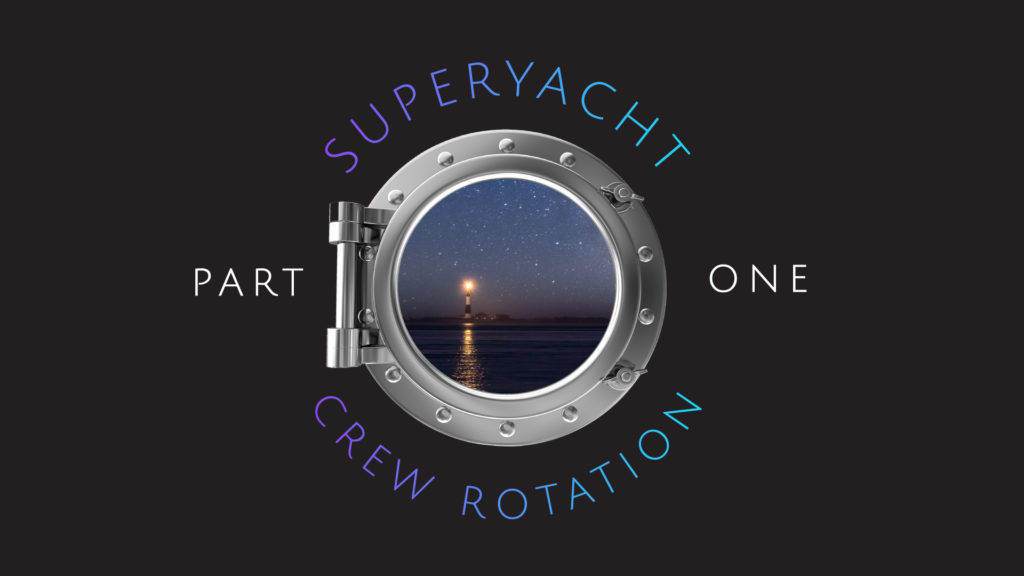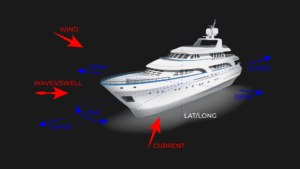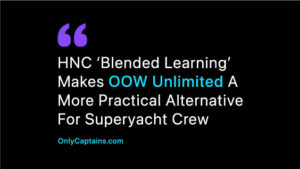Written in collaboration with Captain Brendan O’Shannassy.
Although commercial shipping has rotated crew for many years, it is a recent phenomenon in the superyacht industry. It started to become a reality on yachts first with engineers, and then on the larger yachts where manning regulations required officers with STCW qualifications.
When rotation first started is a little unclear; it was certainly in use in the late 70’s when I was with BP Shipping – though it only applied to deck and engineering officers. However, what was clear, that it was not born out of regulation, but driven by market forces and a recognition that to attract and keep the right people they had to offer a better work/life balance. Today, these very same reasons are relevant to yachting.
So, in our latest post, we are going to take a dive into rotation and, due to its importance to many captains, their families and yacht owners, we will break it down into two parts and focus on the whys, how’s and the impact this fundamental employment change has had on the yachting community.
This week in Part I, Brendan O’Shanassy is writing of his own employment journey to supply some context, then next week in Part II I will take a deeper look at the pros and cons and how you might present the idea to a yacht owner using a worked example.
Brendan
I entered yachting when contracts and structured leave were rare to the point of not known. Leave was when it suited the yacht’s programme, often with little notice. Crew would scramble to make last minute arrangements when a window opened. With limited leave, weekends in port was our time to get away, explore and socialise, leaving the yacht to the care of a couple of watchkeepers. Regardless of age or relationship status, life revolved around the yacht and no alternate lives ashore were maintained.
This began to change for me in 2007 when I joined my first 100m+ yacht and realised there was no stopping a yacht of this scale. It needed crew every day to keep the show running and there were no more ‘weekends with a couple of watchkeepers’. I remember naively saying to the Heads of Departments we would shut the yacht down one weekend for everyone’s rest; they humoured me, said yes, but ignored the instruction and kept the yacht working the way it demanded.
Since that time, I have modelled many and various employment structures for yacht owners and their representatives. When I do these, I do not speak of rotation from a crew’s perspective, it is with consideration of the yacht owners needs and their investment. My point being that the yacht, the owner and guest experience should not suffer because of crew taking leave. I support this position with a crude calculation; add the finance cost of the yacht to the operating expenses and divide by 365 to gain the cost per day of the yacht’s existence. The number can be staggering and to think that you would intentionally stop the operation so the team can take days off does not show good value.
Further to this crude calculation, the owner is reminded that the beauty of yacht ownership is freedom and spontaneity. Rotation can allow that when a gap opens in their diary, they can escape to their yacht and enjoy the pleasure of being on the water with family and friends; something that is even more relevant today.
In one of the presentations the yacht owner agreed for senior crew without hesitation, saying, “but yes, they have families, and we want them to be focussed on us when they are here and not worried about when they can get home.” For junior crew there was a different perspective with the principal asking, “why do these crew want so much time away when they were young?” Weren’t these the years to earn money, travel and gain experience needed to progress?
Malcolm’s comment – the latter point I also heard from an owner. One 80m+ example lost several junior crew because of generous leave/rotation! The basic reasoning was it was expensive to spend so much time at home, all their friends were working so no one to hang out with, and it took far longer to gain the necessary sea time and experience to progress. Sometimes you cannot win!
Be careful what you wish for.
Since 2007 (outside of shipyard construction) I have been on equal time rotation. This is a Nirvana for many but, having defended the position to the owner that the yacht requires 365-day attendance from its captain and senior team to get rotation over the threshold, you are accountable to work accordingly.
So now, during a 2-3-month roster onboard, I tend to focus completely on the yacht and my days exploring the wonderful areas I sail through are a distant memory. Crew come and go in and procession of rotational changes and although bonds are still made perhaps, they are a little weaker? That said, when they return refreshed, the faces are familiar and they quickly adapt back to life onboard without missing a beat; ensuring operational readiness, a consistent service quality, better maintenance and safety.
It could be said that with better leave and rotation means the yacht is now the place we work; it is no longer the centre of our universe and the place where we also lived our lives!
Clearly this is a much healthier balance but, occasionally, I do look back on those time long ago in sepia, when spending 11-months of the year with the same tight crew created my most memorable experiences and learning opportunities. I am open in saying my memory is grander than the reality, it was unsustainable if I wanted any sort of normal life outside of yachting. I could not have raised a family without rotation and so today I am content with a few laps around the yacht at anchor or a quick morning run on the rare times in port. My days exploring are not lost, I now have the time and freedom to return to destinations in my own time and with my family, and that is incomparable.
Done right, better leave and rotation offer crew and yacht owners many benefits and, although there are added costs, carefully planned, they are not as high as might be imagined, and there are many advantages that cannot be measured purely in monetary terms that can add value to the yacht owning experience.
In Part II my deep dive is where you need to go to look to the tools that you might need when structuring your own rotational plans to a yacht owner, their representative or yacht manager. The strength of your case will depend not only of the financial model, but also the quality of your reasoning and supporting facts. Without a compelling case, the yacht owner or their representatives might be thinking “living the dream, sailing the seas, working half a year and still complaining?”









